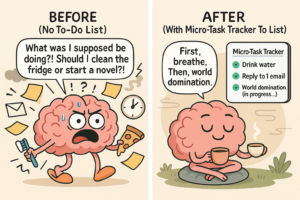Mindful Self-Compassion, Deep Breathing, and Meditation for Anxiety: A Holistic Approach

Mindful Self-Compassion, Deep Breathing, and Meditation for Anxiety: A Holistic Approach
Anxiety is a pervasive issue that affects millions of people worldwide. It can manifest in various forms, from occasional worry to debilitating panic attacks. While there are many treatment options available, including medication and therapy, there’s growing interest in natural and holistic approaches that can complement traditional methods. One such approach involves combining mindful self-compassion, deep breathing, and meditation.
Understanding Mindful Self-Compassion
Mindful self-compassion is a practice that involves treating oneself with kindness, understanding, and acceptance. It’s about recognizing our shared humanity and offering ourselves the same compassion we would extend to a friend in need. This approach is rooted in mindfulness, which involves paying attention to the present moment without judgment.
When we practice mindful self-compassion, we become more aware of our thoughts and feelings, particularly those related to anxiety. Instead of judging ourselves harshly for experiencing anxiety, we can approach our emotions with curiosity and compassion. This can help reduce feelings of shame and isolation, which can exacerbate anxiety symptoms.
The Power of Deep Breathing
Deep breathing is a simple yet powerful technique that can have a profound impact on anxiety. Our breath is closely linked to our emotional state. When we’re stressed or anxious, our breathing tends to become shallow and rapid. By learning to breathe slowly and deeply, we can activate the body’s relaxation response and reduce anxiety symptoms.
There are many different deep breathing techniques, but one of the most effective is diaphragmatic breathing. This involves placing one hand on your chest and the other on your stomach. As you inhale, your stomach should rise, while your chest should remain relatively still. As you exhale, your stomach should fall. Aim to inhale for a count of four, hold for a count of four, and exhale for a count of six.
Meditation for Anxiety: A Step-by-Step Guide
Meditation is a powerful tool for managing anxiety. It involves training your mind to focus on the present moment and let go of thoughts and emotions that are causing distress. While there are many different meditation techniques, a simple approach for beginners is to focus on the breath. Here’s a step-by-step guide to help you get started:
1. Find a Quiet Space: Choose a location where you won’t be disturbed. This could be a quiet room in your home, a peaceful outdoor space, or even a designated meditation corner. The key is to find a place where you can feel relaxed and undisturbed.
2. Get Comfortable: Find a comfortable sitting position, such as on a chair or cushion. You can also choose to lie down, but it’s important to avoid falling asleep. Ensure your back is straight and your body is relaxed.
3. Focus on Your Breath: Close your eyes and gently bring your attention to your breath. Notice the sensation of the air entering and leaving your nostrils. Observe the rise and fall of your chest and abdomen. Try to avoid judging or controlling your breath. Simply let it flow naturally.
4. Notice Your Thoughts: As you focus on your breath, you may notice thoughts arising in your mind. This is perfectly normal. When you become aware of a thought, simply acknowledge it without judgment and gently bring your attention back to your breath.
5. Practice Non-Judgmental Awareness: The goal of meditation is to observe your thoughts and feelings without judgment. Avoid labeling them as good or bad. Simply notice them and let them pass without getting caught up in them.
6. Use a Mantra or Focus Object: If you find it difficult to focus on your breath, you can use a mantra or focus object. A mantra is a word or phrase that you repeat silently to yourself. A focus object is something that you concentrate on, such as a candle flame or a piece of artwork.
7. Be Patient and Persistent: Meditation is a skill that takes time to develop. Don’t get discouraged if your mind wanders frequently at first. The more you practice, the easier it will become to focus and stay present.
8. Incorporate Mindfulness into Daily Life: Once you’ve established a regular meditation practice, try to incorporate mindfulness into other aspects of your life. Pay attention to your thoughts and feelings throughout the day, and practice non-judgmental awareness in your interactions with others.
9. Join a Meditation Group or Class: Connecting with others who are also practicing meditation can provide support, encouragement, and a sense of community. Consider joining a local meditation group or taking a meditation class.
10. Seek Professional Guidance: If you’re struggling with anxiety or find it difficult to meditate on your own, consider seeking professional guidance. A therapist or counselor can provide tailored support and techniques to help you manage your anxiety and deepen your meditation practice.
Combining Mindful Self-Compassion, Deep Breathing, and Meditation
While each of these practices can be beneficial on its own, combining them can create a powerful synergy for managing anxiety. Here’s how to incorporate them into your daily routine:
1. Begin with Mindful Self-Compassion: Start your practice by offering yourself kind and compassionate thoughts. Treat yourself with the same understanding and care you would extend to a friend in need. This can help reduce feelings of self-criticism and shame, which often contribute to anxiety.
2. Incorporate Deep Breathing: Integrate deep breathing exercises into your meditation practice. This can help calm your mind and body, reducing anxiety symptoms. Focus on slow, deep breaths, allowing your chest and abdomen to expand and contract fully.
3. Focus on the Present Moment: During meditation, pay attention to your thoughts and feelings without judgment. Notice any anxious thoughts or sensations that arise. Instead of trying to push them away, observe them with curiosity and compassion. This can help you develop a greater sense of awareness and acceptance, which can reduce anxiety.
4. Combine Deep Breathing and Meditation: Practice mindful self-compassion while simultaneously engaging in deep breathing. This can create a more immersive and effective experience. As you focus on your breath, offer yourself kind and supportive thoughts.
5. Experiment and Find What Works for You: There’s no one-size-fits-all approach to combining these practices. Experiment with different techniques and find what works best for you. You may discover that certain combinations or variations are particularly effective in managing your anxiety.
Addressing Specific Types of Anxiety
While these techniques can be effective for managing various types of anxiety, it’s important to recognize that individual experiences may vary. If you’re struggling with a specific type of anxiety, such as generalized anxiety disorder or social anxiety disorder, it may be helpful to seek professional guidance. A therapist can provide tailored strategies and support to help you manage your symptoms.
Overcoming Obstacles to Practice
Incorporating new practices like mindful self-compassion, deep breathing, and meditation into your daily routine can be challenging. It’s natural to encounter obstacles along the way. Here are some strategies to help you overcome these challenges:
1. Start Small and Gradually Increase: Begin with short practice sessions to avoid feeling overwhelmed. Gradually increase the duration of your practice as you become more comfortable. Remember, consistency is key, so even a few minutes of practice each day can make a difference.
2. Be Patient and Persistent: Developing new habits takes time. Don’t get discouraged if you don’t see immediate results. Be patient with yourself and celebrate small victories. Persistence is crucial in overcoming obstacles and reaping the benefits of these practices.
3. Find a Supportive Community: Connecting with others who are also practicing mindfulness and meditation can provide encouragement, support, and accountability. Join a local meditation group, online community, or consider finding a meditation partner. Sharing experiences and challenges can make the journey less isolating.
4. Seek Professional Guidance: If you’re struggling to manage your anxiety on your own or find it difficult to incorporate these practices into your daily life, don’t hesitate to seek professional help. A therapist or counselor can provide tailored guidance, support, and additional tools to help you overcome obstacles and achieve your goals.
5. Prioritize Self-Care: Remember to prioritize self-care in general. Get enough sleep, eat a healthy diet, and engage in regular physical activity. These factors can significantly impact your mental and emotional well-being, making it easier to overcome challenges and maintain a consistent practice.
Conclusion
Mindful self-compassion, deep breathing, and meditation offer a holistic approach to managing anxiety. By cultivating self-compassion, learning to breathe effectively, and training your mind to focus on the present moment, you can reduce anxiety symptoms, improve your overall well-being, and lead a more fulfilling life.




